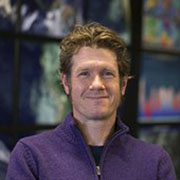A .gov website belongs to an official government organization in the United States.
A lock () or https:// means you've safely connected to the .gov website. Share sensitive information only on official, secure websites.

Observations and measurements show that ice crystals transform from compact, pristine forms to "florid", complex forms as the supersaturation rises. This morphological transformation has important consequences for the radiative properties of clouds, and for how ice crystals are treated in numerical models. Our analysis of ice crystals grown from small, 10-micron radius frozen droplets in a levitation diffusion chamber reveals that morphological transformations begin above a relative supersaturation threshold. While the threshold is derived from measurements at temperatures below -40 C, extrapolation to higher temperatures matches data from earlier laboratory measurements. This result indicates that this supersaturation threshold may be general and that it could be used as a replacement for similar thresholds used in numerical cloud models. We show that theories of faceting instability can predict the measured threshold. Preliminary analysis of ice crystals formed from pure water as compared to NaCl solution drops shows that there may be fundamental differences in the growth rates and the morphological changes to the crystals.
Dr. Jerry Harrington is a Professor of Meteorology in the Department of Meteorology and Atmospheric Science at Pennsylvania State University. Dr. Harrington's research focuses on cloud processes. His work ranges from studying the growth of individual drops and ice crystals, to studying the structure, microphysics, and dynamical evolution of cloud systems. Studies of droplet and ice crystal growth is done theoretically and in the laboratory where particles can be studied in highly controlled environments. Jerry also works on the radiative, turbulent, and microphysical processes within clouds using both measurements and models. He continues to be involved in a number of Arctic field studies that attempt to understand Arctic cloud processes. Jerry and his group also develop numerical models to understand the interactions between radiation, microphysics, and turbulence within clouds. The group's modeling studies have ranged from studying layered clouds in the subtropics and the arctic, to simulations of three dimensional radiative effects on supercell thunderstorms.
ALL Seminar attendees agree not to cite, quote, copy, or distribute material presented without the explicit written consent of the seminar presenter. Any opinions expressed in this seminar are those of the speaker alone and do not necessarily reflect the opinions of NOAA or CSL.